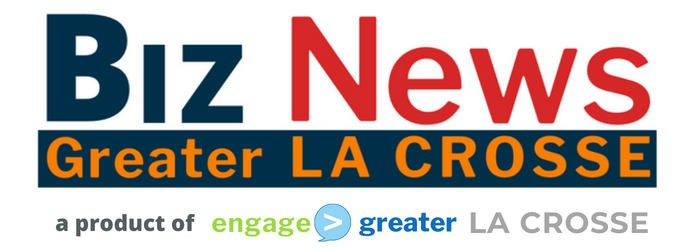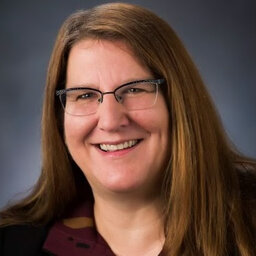Be Forgiven in Three Steps
Work with your lender.
Applications opened months ago for this program, which was designed to keep employees getting paid by you vs, going on unemployment when the pandemic closed businesses in mid-March. Congress approved up to $659 billion to aid with job retention and business expenses.
Applications are now closed.
As soon as you received the funds, the clock started ticking on when they needed to be used. The percentage of funds allowed for business expenses vs. payroll changed mid-process.
Follow these three steps.
STEP 1A: DETERMINE THE MAXIMUM FORGIVENESS POSSIBLE
1) Payroll Expenses
in the first 24-weeks following the loan origination, defined as
- Compensation (not exceeding $46,154 per employee) in the form of: gross salary, gross wages, gross commissions, and gross tips, vacation, parental, family, medical, or sick leave (other than leave for which the employer was reimbursed under the Families First Coronavirus Response Act), and allowance for separation or dismissal;
- Employer contribution to employee group health care coverage
- Employer contribution for employee retirement plans; and
- Payment of state and local taxes assessed on compensation fo the employees
Note for an independent contractor or sole proprietor: payroll costs = wages, commissions, income, or net earnings from self-employment, or similar compensation.
2) Non-Payroll Expenses
- Mortgage interest payments for the business on real or personal property (debt incurred before February 15, 2020)
- Rent or lease payments for the business on real or personal property (lease in force before February 15, 2020); and
- Utility payments for the business for electricity, gas, water, transportation, telephone, or internet access (service began before February 15, 2020)
-
Note for independent contractor or sole proprietors: you must have claimed or be entitled to claim a deduction for these expenses on your 2019 Form 1040 Schedule C in order to claim them as expenses eligible for PPP loan forgiveness in 2020
STEP 1B: IDENTIFY YOUR 24 WEEK PERIOD
It is either the 24 weeks (168 days) beginning on the day the PPP loan was disbursed or, if you pay payroll biweekly (or more frequent), it begin on the first day of the first pay period.
Be sure to count the day of your disbursement as part of the 24 weeks.
STEP 2A: DETERMINE YOUR FORGIVENESS REDUCTION FOR SALARIES / WAGES REDUCED BY > 25%
This is based on a reduction in salaries or wages by more than 25%.
The amount of the reduction in loan forgiveness is based on the amount of the reduction in pay.
For employees who earned $100,000 or less in 2019 (or were not employed by the borrower in 2019), the borrower’s loan forgiveness will be reduced for each employee whose average pay (salary or hourly wage) during the 24-week period is less than 75% of their average pay from the full quarter prior to the 24-week period (for most borrowers: January 1 to March 31, 2020).
Safe Harbor: Borrowers can avoid having their loan forgiveness amount reduced if they restore an employee’s pay. Specifically, if by not later than December 31, 2020, the employee’s annual salary or hourly wage is equal to or greater than their annual salary or hourly wage on February 15, 2020, the borrower’s loan forgiveness is not reduced.
STEP 2B. DETERMINE LOAN FORGIVENESS REDUCTION FOR < AVERAGE # OF EMPLOYEES
The borrower’s loan forgiveness will be reduced if the average number of weekly full-time equivalent employees (FTEs) during the 24-week period is less than the average number of FTEs during the borrowers’ chosen reference period.
Borrowers can choose between the following reference periods:
• February 15 to June 30, 2019,
• January 1 to February 29, 2020, or
• In the case of a seasonal employer a consecutive 12-week period between May 1 and September 15, 2019
Exceptions: Borrowers will not be penalized for any FTE reductions if either of the following occurred:
• The borrower is unable to rehire individuals who were employees on February 15, 2020 and unable to hire similarly qualified employees for unfiled positions before December 31, 2020
• The borrower is able to document the inability to return to their February 15, 2020 level of business activity due to compliance with social distancing or other customer safety requirements
Safe Harbor: There is no reduction in the forgivable loan amount for borrowers who reduced their FTEs during the period beginning on February 15 and ending on April 26, 2020, but who by no later than December 31, 2020 restored the FTEs to the level that existed on February 15.
STEP 3: APPLY THE 60% RULE
A borrower’s maximum loan amount could also be reduced if the borrower’s eligible non-payroll expenses exceed 40% of the total eligible expenses. The maximum eligible loan forgiveness is payroll expenses divided by 0.60.
Example: If your payroll expenses for the 24-week period equal $60,000, your loan forgiveness cannot exceed $100,000. Any more than $100,000 would mean your non-payroll expenses represent more than 40 percent of the total forgiveness amount
LOAN FORGIVENESS AMOUNT Borrowers’ loan forgiveness will equal the smallest of the following:
1. Your PPP loan amount
2. The maximum loan forgiveness amount from Step 1 less any reductions from Step 2
3. The maximum loan forgiveness amount where eligible payroll expenses equals or exceeds 60% of the total forgiveness (i.e. your eligible payroll expenses ÷ 0.60)
Remaining Unforgivable Loan Amounts
The amount rolls into a loan based on the time you applied. Payments begin upon applying for partial forgiveness.
BEFORE OR ON JUNE 4, 2020:
2-year loan at 1% interest.
AFTER JUNE 4, 2020:
5-year loan at 1% interest.
Follow these three steps.

DOCUMENTATION YOU’LL NEED
Proof of Payroll
Bank statements or payroll service provider reports showing compensation paid
Tax forms or payroll service reports for the 24 week period for 1) payroll tax filings (Form 941) and 2) State quarterly wage reports and unemployment insurance tax filings
Proof of heatlh insurance and retirement plan payments payment (receipts, canceled checks, account statements, etc.)
Proof of # of Employees (Full Time Equivalents – FTEs)
Payroll tax filings (Form 941), state quarterly wage reports, and unemployment insurance tax filings that reinforce Step 2 of the filing.
NonPayroll Expenses
Proof of Rent/Mortgage payments such as amortization schedules, canceled checks, statements, copy of lease, etc.
Business utility proof of payment (statements, invoices, canceled checks)




